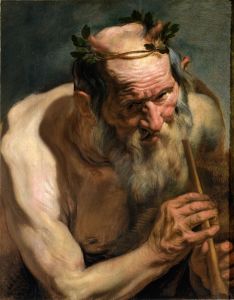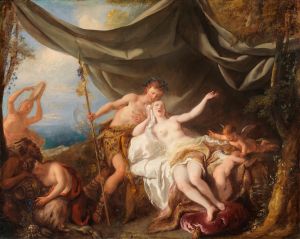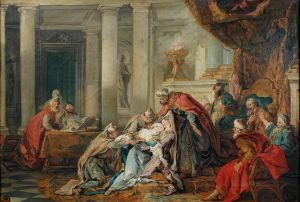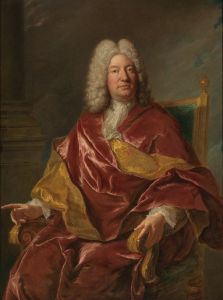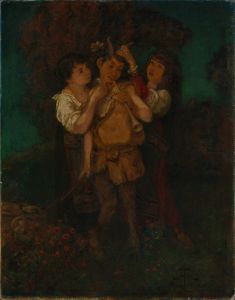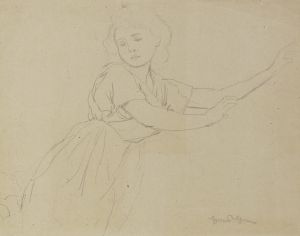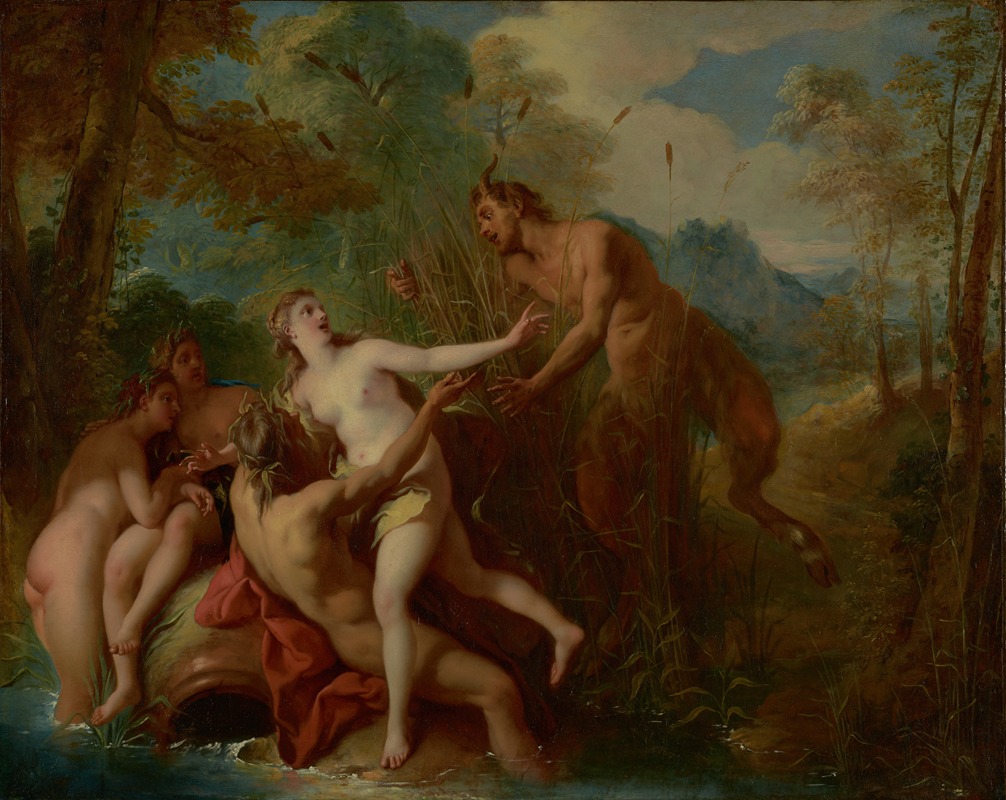
Pan and Syrinx
A hand-painted replica of Jean-François de Troy’s masterpiece Pan and Syrinx, meticulously crafted by professional artists to capture the true essence of the original. Each piece is created with museum-quality canvas and rare mineral pigments, carefully painted by experienced artists with delicate brushstrokes and rich, layered colors to perfectly recreate the texture of the original artwork. Unlike machine-printed reproductions, this hand-painted version brings the painting to life, infused with the artist’s emotions and skill in every stroke. Whether for personal collection or home decoration, it instantly elevates the artistic atmosphere of any space.
Jean-François de Troy was a prominent French Rococo painter and tapestry designer, known for his elegant and dynamic compositions. One of his notable works is "Pan and Syrinx," which depicts a scene from classical mythology. This painting illustrates the story of the god Pan and the nymph Syrinx, a popular theme in art and literature.
In Greek mythology, Pan is the god of the wild, shepherds, and flocks, often associated with rustic music and depicted with the hindquarters, legs, and horns of a goat. Syrinx, on the other hand, was a beautiful water nymph known for her chastity and devotion to the goddess Artemis. According to the myth, Pan fell in love with Syrinx and pursued her. To escape his advances, Syrinx fled and, upon reaching the river's edge, pleaded with the river nymphs to save her. In response to her prayers, she was transformed into a bundle of reeds. When Pan arrived and found only the reeds, he sighed in disappointment. The sound of his breath through the reeds produced a haunting melody, inspiring him to cut the reeds and fashion them into the first set of panpipes, which he named after Syrinx.
Jean-François de Troy's "Pan and Syrinx" captures this dramatic and transformative moment. The painting is characterized by its dynamic composition and the use of vibrant colors, typical of the Rococo style. De Troy's skillful brushwork and attention to detail bring the mythological scene to life, highlighting the emotional intensity of the narrative. The figures of Pan and Syrinx are rendered with a sense of movement and tension, reflecting the urgency and drama of the chase.
The painting is also notable for its depiction of the natural landscape, which plays a crucial role in the story. De Troy's use of light and shadow creates a sense of depth and atmosphere, enhancing the overall impact of the scene. The lush greenery and flowing water serve as a backdrop to the central figures, emphasizing the connection between the characters and their environment.
"Pan and Syrinx" exemplifies Jean-François de Troy's ability to blend classical themes with the stylistic elements of the Rococo period. His work often explored themes of love, desire, and transformation, drawing on both mythological and contemporary sources. Through his paintings, de Troy contributed to the rich tapestry of 18th-century French art, leaving a lasting legacy that continues to be appreciated by art historians and enthusiasts alike.
While specific details about the provenance and current location of "Pan and Syrinx" may not be widely documented, the painting remains an important example of de Troy's artistic achievements and his interpretation of classical mythology.





